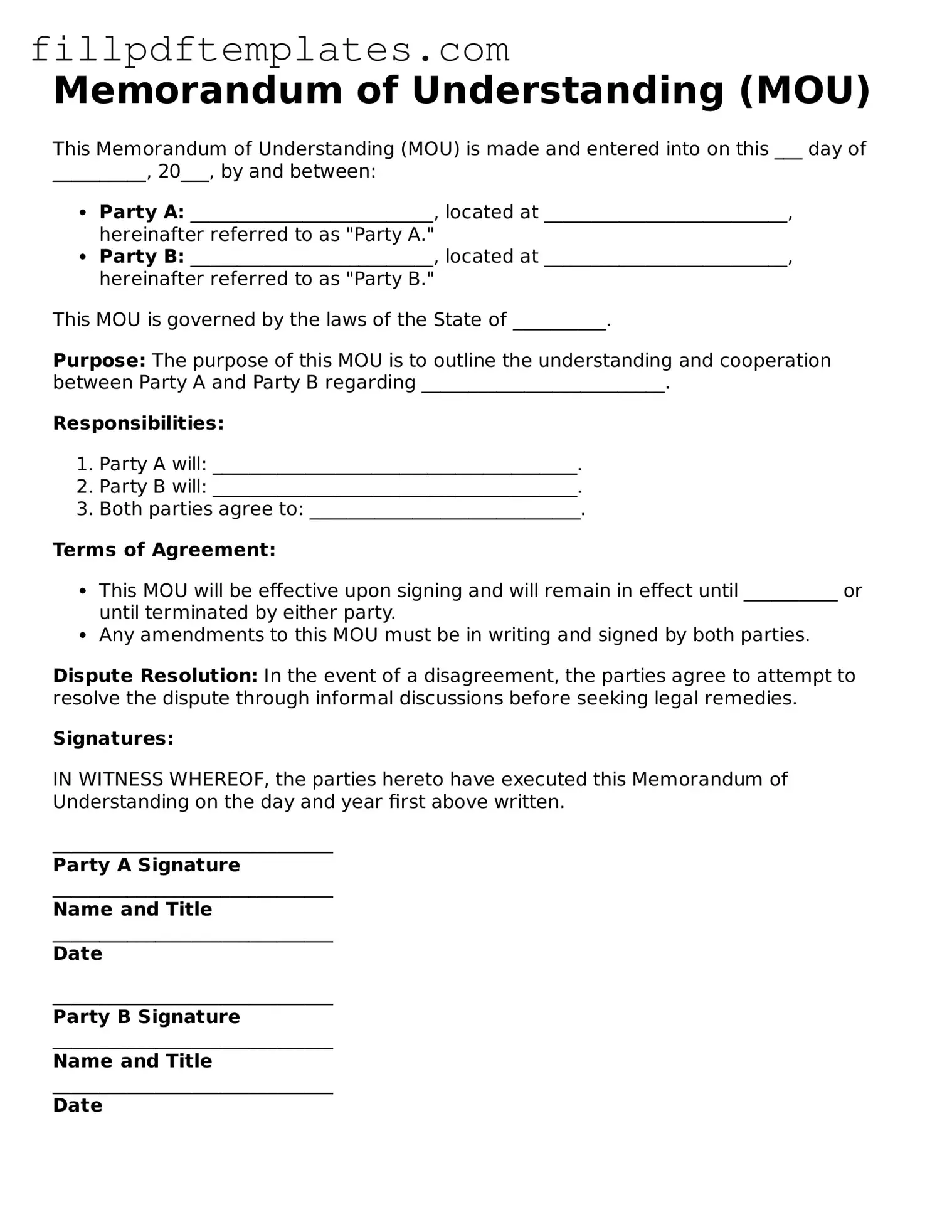Memorandum of Understanding (MOU)
This Memorandum of Understanding (MOU) is made and entered into on this ___ day of __________, 20___, by and between:
- Party A: __________________________, located at __________________________, hereinafter referred to as "Party A."
- Party B: __________________________, located at __________________________, hereinafter referred to as "Party B."
This MOU is governed by the laws of the State of __________.
Purpose: The purpose of this MOU is to outline the understanding and cooperation between Party A and Party B regarding __________________________.
Responsibilities:
- Party A will: _______________________________________.
- Party B will: _______________________________________.
- Both parties agree to: _____________________________.
Terms of Agreement:
- This MOU will be effective upon signing and will remain in effect until __________ or until terminated by either party.
- Any amendments to this MOU must be in writing and signed by both parties.
Dispute Resolution: In the event of a disagreement, the parties agree to attempt to resolve the dispute through informal discussions before seeking legal remedies.
Signatures:
IN WITNESS WHEREOF, the parties hereto have executed this Memorandum of Understanding on the day and year first above written.
______________________________
Party A Signature
______________________________
Name and Title
______________________________
Date
______________________________
Party B Signature
______________________________
Name and Title
______________________________
Date
